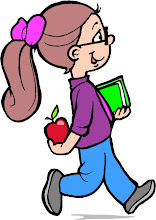- Hymn: Wonderful Grace of Jesus
- Memory Verse: John 3:18
- Searching for Treasure: we colored the game board and talked about why different areas were described as they were, for instance, why would "Complaining" be a marsh or "Friendship" a river?
- Lost in India: we continued watching the videos and completing the activities
- We reviewed our catechism.
- We prayed.
- We continued reading Kidnapped by River Rats
- Hymn: Something Beautiful
- Memory Verse: John 3:19
- Searching for Treasure: we played the game. It took four days to complete a game. We played it for ten or fifteen minutes each day, then put sticky tabs with our names on it where our markers stopped each day so we could continue where we left on the following day.
- Lost in India: this was the final week of this program.
- We reviewed our catechism.
- We prayed.
- We finished the book, Kidnapped by River Rats
You can tell that this was a really strange week. There was a lot going on and we scaled a lot of our studies back to the bare minimum.
- Hymn: We Gather Together
- Memory Verse: John 3:20
- Searching for Treasure: we played the game through once, which took two days.
- Bible Reading: Exodus 36 - 40
- We prayed each day.
- Hymn: We Gather Together -- we only sang it twice last week, so we decided to have it for another week
- Memory Verse: John 3:21 (yeah!)
- Searching for Treasure: we played the game through once, again.
- Catechism: #106, 108, 109
- Reviewed all previous catechism
- Prayed daily.
- Began reading Danger on the Flying Trapeze about D.L. Moody
- Hymn: Come Ye Thankful People, Come -- you can tell it's Thanksgiving time
- Reviewed John 3:1-21 each day
- Princess and the Kiss -- read book and lesson 15
- Reviewed catechism
- Prayed daily
- Finished reading Danger on the Flying Trapeze

























